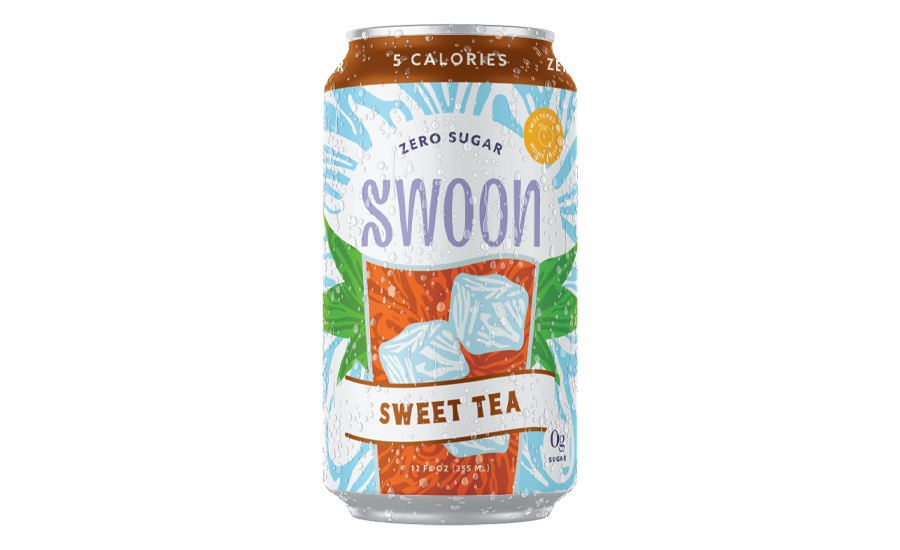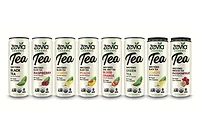2022 State of the Beverage Industry | US tea market recalibrates as RTD, refrigerated tea drives the category
Health attributes, convenience bolster tea’s position with consumers

While the impact of the pandemic is forcing the overall beverage market to adjust, experts note that the tea and ready-to-drink (RTD) tea category already have begun recalibrating.
Chicago-based Mintel’s “US Tea and RTD Tea Market Report 2021,” notes that as bagged/loose leaf teas, single cup and instant teas’ sales growth began to shrink back in 2021, the RTD and refrigerated segment began to pick up steam.
“Consumers have continued to focus on both their physical and emotional health in 2021 because of the lingering pandemic” the report states. “Despite loosened restrictions, more consumers will be adopting hybrid approaches to work and school going forward that will contribute both to new occasions and subdued impulse occasions for tea consumption.”
Sally Lyons Wyatt, executive vice president at Information Resources Inc. (IRI), Chicago, noted in Beverage Industry’s June eMagazine, that overall, the tea market has grown in dollar sales, due in large part to refrigerated RTD tea and tea sales online.
“Refrigerated RTD teas are the only segment that are driving dollar and unit growth. The immediacy factor is a driver of choice,” Wyatt explained. “Consumers looking for a cold tea drink for immediate consumption are turning to these refrigerated options. This is also due because of mobility, but also the healthier aspects of these drinks and the caffeine versus other drinks in the marketplace.”
|
|
DOLLAR SALES | % CHANGE vs PRIOR YEAR | MARKET SHARE | % CHANGE vs PRIOR YEAR | |
| 1 | Milos | $367,338,686 | 46.5 | 26.1 | 6.6 |
| 2 | Private Label | $263,530,528 | 6.2 | 18.7 | -0.6 |
| 3 | Gold Peak | $228,123,207 | -8.9 | 16.2 | -3.3 |
| 4 | Turkey Hill | $169,774,627 | 6.5 | 12.1 | -0.4 |
| 5 | Red Diamond | $132,474,592 | 1.9 | 9.4 | -0.7 |
|
|
Category Total* | $1,407,566,627 | 0.6 | 100 | --- |
*Includes brands not listed
Source: Information Resources, Inc. (IRI), Chicago. Total U.S. supermarkets, drug stores, gas and convenience stores, mass merchandisers, military commissaries, and select club and dollar retail chains for the 52 weeks ending May 15.
According to IRI OmniMarket data, refrigerated (RFG) tea generated dollar sales of $1.4 billion, a 9.6% year-over-year (YoY) increase for the 52 weeks ending May 15, in total U.S. multi-outlets. Meanwhile, RTD Tea posted dollar sales of $4.2 billion, with a 1.5 % YoY increase for the same time-period, IRI data shows.
In contrast, bagged/loose leaf tea and single cup tea posted total sales of $1.4 billion in multi-outlets, this represented a 2.2% YoY decrease for the 52 weeks ending May 15, IRI data shows.
There are several different reasons for the declines, Wyatt said in Beverage Industry’s June eMagazine. “[S]upply chain constraints, visits to out-of-home options (specialty shops, etc.), inflationary pressures on consumers’ overall spending, etc.,” she noted.
Nevertheless, as opportunities for tea brands are connected to forging or reinforcing stronger ties to wellbeing, tea drinkers are thirsty for more options, experts note.
In its “State of the U.S. Tea Industry Review of 2021 and a Look Forward into 2022” commentary, New York-based Tea Association of the U.S.A. Inc. notes that, as far as tea is concerned, the pandemic has been a mixed blessing.
“Overall, the tea market grew in 2021,” it states. “In reviewing tea import figures through September, total tea imports are up over 8%, with black tea exceeding 2020 by more than 9%. As reported last year, a qualitative study sponsored by the Tea Association reported that consumers turned to tea during those difficult times. This trend continued in 2021.”
|
|
DOLLAR SALES | % CHANGE vs PRIOR YEAR | MARKET SHARE | % CHANGE vs PRIOR YEAR | |
| 1 | Pure Leaf | $946,926,063 | 2.8 | 22.1 | 0.3 |
| 2 | AriZona | $868,006,786 | 1.7 | 20.3 | 0.1 |
| 3 | Lipton | $557,202,947 | 2.5 | 13 | 0.1 |
| 4 | Gold Peak | $477,181,378 | 1.3 | 11.1 | 0 |
| 5 | Brisk | $409,792,914 | 13.7 | 9.6 | 1 |
|
|
Category Total* | $4,285,115,703 | 1.5 | 100 | --- |
*Includes brands not listed
Source: Information Resources, Inc. (IRI), Chicago. Total U.S. supermarkets, drug stores, gas and convenience stores, mass merchandisers, military commissaries, and select club and dollar retail chains for the 52 weeks ending May 15.
IRI’s Wyatt noted that, given the inherent health and wellness benefits of tea, added benefits are providing more variety in the category that is good for those consumers seeking specific assets.
“Immunity claims like teas with immunity defense claims, as well as pre/probiotic claims are doing well,” Wyatt said in Beverage Industry’s June eMagazine. “Diet claims like ‘vegan’ and ‘vegetarian' have strong growth. We are also seeing teas with energy claims showing positive increases as alternatives to energy drinks.”
Further, sugar reduction trends have influenced refrigerated RTD tea positively in two ways, Wyatt explained.
“First, teas that have no/low/less sugar are seeing strong growth. In addition, teas using alternative sweeteners are seeing growth as well,” she said. “These options provide consumers choices to align with their needs and they are benefiting the category.”
In March, New York-based Swoon announced the launch of its Zero Sugar Swoon Sweet Tea. Made with steeped and brewed black tea and sweetened with naturally sugar-free monk fruit, Swoon’s Sweet Tea boasts 24 mg of caffeine and a bold flavor with a satisfying sweetness, the company says. Ideal for those who are trying to cut sugar or diabetics, the new ready-to-drink tea features the classic southern flavor of sweet tea, it adds.

Pure Leaf Iced Tea, a brand of Purchase, N.Y-based PepsiCo, also recently announced the expansion of its tea portfolio with new Lower Sugar iced teas. The new line from Pure Leaf comes in three flavors that are reduced sugar takes of Pure Leaf’s Subtly Sweet Black Tea, Subtly Sweet Peach and Subtly Sweet Lemon. Each 18.5-ounce bottle of Pure Leaf Lower Sugar contains 20 calories and 5 grams of added real sugar, which is 85% less sugar than the brand’s Sweet Tea offering, the company says.
Although the pandemic continues to affect the overall tea market, the category is resilient, experts note.
In a report from New York-based Beverage Marketing Corporation (BMC) titled “Ready-to-Drink Tea in the U.S. through 2025,” the market research firm notes that the health message of tea has brought in consumers who might otherwise not be inclined to drink the beverage.
“The coronavirus has continued to disrupt the usual patterns for tea segments in 2021, but the impact should abate somewhat to 2025,” the report states. “Loose tea, perhaps the messiest and most difficult type to prepare, has generally grown, albeit slowly. Brewing tea well is not easy, which makes loose tea the province of connoisseurs who know what to do with tea leaves.
“On the other hand, a small portion of the population has taken to drinking more exotic varieties of teas, including bags and loose tea,” it continues. “While volume is relatively low compared to mainstream tea products, they have helped to subsidize volume levels in the tea market.”
|
|
DOLLAR SALES | % CHANGE vs PRIOR YEAR | MARKET SHARE | % CHANGE vs PRIOR YEAR | |
| 1 | Bigelow | $232,815,227 | 1 | 17.6 | 0.47 |
| 2 | Lipton Tea | $196,224,937 | 6.4 | 14.46 | 0.73 |
| 3 | Celestial Tea | $161,585,076 | 1.9 | 11.91 | 0.42 |
| 4 | Twinings Tea | $117,023,303 | 1 | 8.63 | 0.23 |
| 5 | Yogi Tea | $102,601,594 | 2.3 | 7.56 | 0.3 |
|
|
Category Total* | $1,356,606,645 | -1.7 | 100 | --- |
*Includes brands not listed
Source: Information Resources, Inc. (IRI), Chicago. Total U.S. supermarkets, drug stores, gas and convenience stores, mass merchandisers, military commissaries, and select club and dollar retail chains for the 52 weeks ending May 15.
IRI’s Wyatt noted In Beverage Industry’s June eMagazine that, although bags and loose tea purchasing have witnessed declines, “herbal teas have gained share from all other tea types.”
“Given all of the pressures that consumers are under today with the current economic situation (e.g., inflation, rising gas prices, etc.), it makes sense they are looking for ways to relax,” Wyatt said. “Herbal tea is an excellent option for unwinding, plus it doesn’t have calories.”
Moreover, as packaging and procuring ingredients have been challenging for beverages in general, it is the same for tea, Wyatt noted. “Issues with the supply chain of ingredients, glass, etc., have and continue to negatively impact in-stock rates,” she said.
Nevertheless, as the issues impacting tea varies by product and package type, “we do [predict] there will be improvements in some areas, but new challenges in others,” Wyatt concluded.
Looking for a reprint of this article?
From high-res PDFs to custom plaques, order your copy today!







